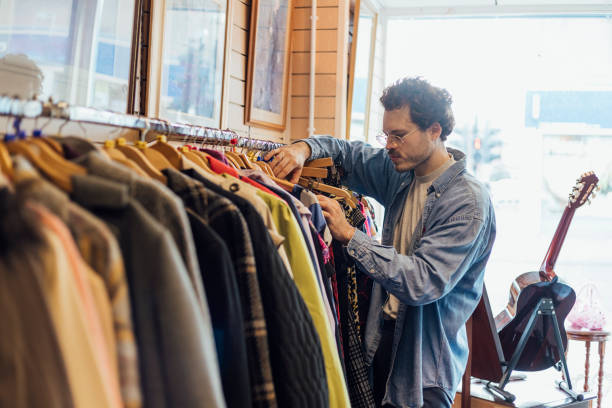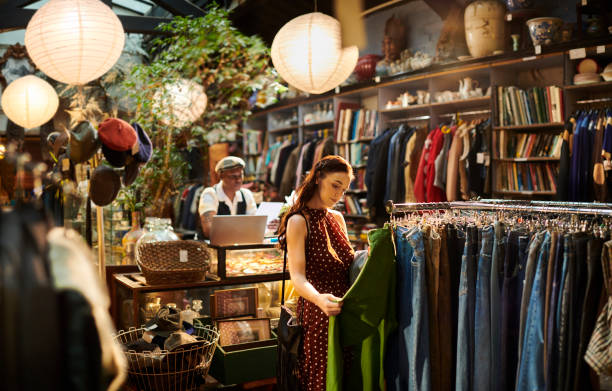
The Business of Fashion: From Concept to Consumer – Insightful Guide
In the complex and dynamic world of fashion, the journey from a designer’s initial concept to the final product reaching the consumer involves multiple stages, intensive collaboration, and strategic planning. This article will explore the core components of the fashion business, providing insights into the intricate processes that drive this influential industry.
Design and Conceptualization

The birth of a fashion item begins in the minds of designers who draw inspiration from a wide array of sources. These sources could range from nature and architecture to cultural movements and historical periods. Designers create initial sketches and mood boards to visualize their ideas, carefully selecting fabrics, colors, and patterns. The conceptualization phase is crucial as it lays the groundwork for the entire collection and sets the tone for the brand’s seasonal narrative.
During this phase, designers also consider functionality, market trends, and sustainability. Innovative techniques and materials are increasingly being prioritized to meet the demand for eco-friendly fashion. Brainstorming sessions, prototype creation, and iterative feedback loops are integral to refining the designs before they move on to the development phase.
Development and Production
Once designs are finalized, the development phase kicks in, where technical patterns are created, and samples are produced. This stage often involves collaboration with pattern makers, seamstresses, and garment technologists who ensure that the designs are translated into wearable items. Materials are sourced, suppliers are contacted, and production schedules are established.
Quality control is paramount during production. Each garment undergoes meticulous testing for durability, fit, and finish. The process entails multiple fittings and adjustments to ensure that the final products meet the brand’s standards. Fast fashion brands may rush through this phase, but high-end labels invest substantial time and resources to perfect their apparel.
Marketing and Branding
Effective marketing and branding are essential to position the fashion line in the consumer’s mind. This involves creating a compelling brand story, devising marketing strategies, and utilizing various media channels to promote the collection. Social media, fashion shows, influencer partnerships, and public relations campaigns are vital tools in modern fashion marketing.
Brands often segment their target audiences to tailor their messages more effectively. By understanding consumer behaviors and preferences, they can create personalized marketing initiatives that resonate deeply with their audience. A strong, consistent brand identity helps in building loyalty and distinguishing the brand in a crowded market.
Distribution and Retail
The next phase is getting the product into the hands of the consumer. This involves a well-coordinated distribution network that includes both online and offline channels. E-commerce platforms have revolutionized the way fashion is consumed, offering convenience and a broader reach. However, traditional brick-and-mortar stores still play a significant role by providing a tangible shopping experience.
Effective inventory management is critical to avoid overstocking or stockouts. Brands use various retail strategies, such as pop-up stores and exclusive collections, to create buzz and attract customers. Collaborations with multi-brand retailers also help in wider distribution and reaching diverse customer bases.
Sales and Customer Feedback
Sales performance and customer feedback are the final indicators of success in the fashion business. Brands closely monitor sales data to understand consumer preferences and adjust their strategies accordingly. Customer feedback, gathered through various channels such as social media, surveys, and direct interactions, provides invaluable insights for future collections.
This feedback loop is crucial for continuous improvement and innovation. Brands that actively listen to their customers can quickly adapt to changing preferences and maintain a competitive edge. Additionally, excellent customer service enhances brand reputation and fosters long-term loyalty.
Conclusion
The journey from concept to consumer in the fashion industry is an intricate process that requires creativity, collaboration, strategic planning, and adaptability. Each stage, from design and production to marketing and retail, plays a crucial role in shaping the final product and ensuring its success in the market. By understanding and mastering these components, fashion brands can effectively meet consumer demands, stay ahead of trends, and build lasting relationships with their customers.
FAQs
-
What is the first step in the fashion design process?
The first step is design and conceptualization, where designers get inspired and create initial sketches and mood boards.
-
How important is quality control in fashion production?
Quality control is paramount as it ensures that the garments meet the brand’s standards for durability, fit, and finish.
-
What role does marketing play in fashion?
Marketing is crucial in positioning the fashion line, building brand identity, and reaching the target audience through various channels.
-
How has e-commerce impacted fashion distribution?
E-commerce has revolutionized fashion distribution by offering convenience, broader reach, and the ability to shop from anywhere at any time.
-
Why is customer feedback important in the fashion industry?
Customer feedback provides valuable insights for continuous improvement, helps brands adapt to changing preferences, and enhances customer loyalty.